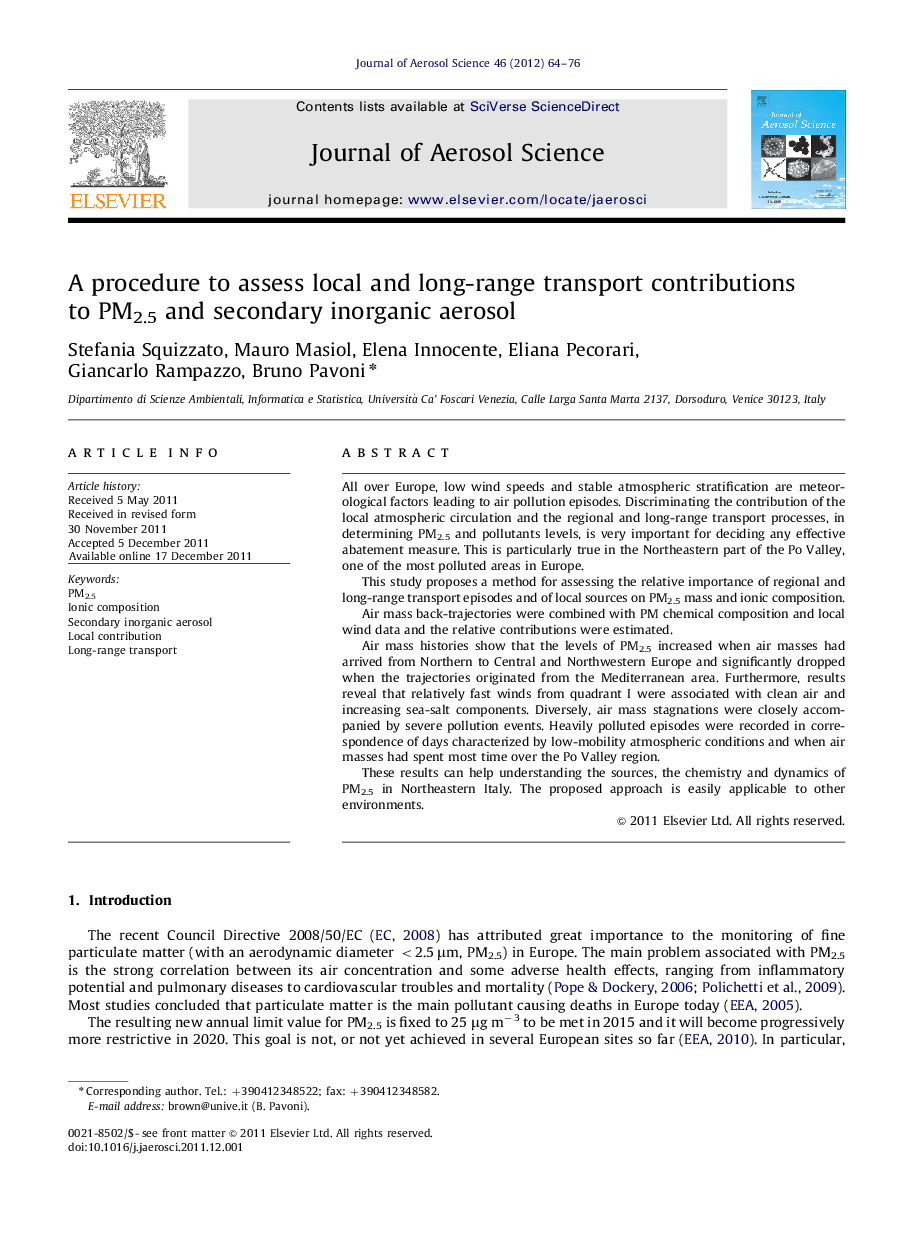| Article ID | Journal | Published Year | Pages | File Type |
|---|---|---|---|---|
| 4452694 | Journal of Aerosol Science | 2012 | 13 Pages |
All over Europe, low wind speeds and stable atmospheric stratification are meteorological factors leading to air pollution episodes. Discriminating the contribution of the local atmospheric circulation and the regional and long-range transport processes, in determining PM2.5 and pollutants levels, is very important for deciding any effective abatement measure. This is particularly true in the Northeastern part of the Po Valley, one of the most polluted areas in Europe.This study proposes a method for assessing the relative importance of regional and long-range transport episodes and of local sources on PM2.5 mass and ionic composition.Air mass back-trajectories were combined with PM chemical composition and local wind data and the relative contributions were estimated.Air mass histories show that the levels of PM2.5 increased when air masses had arrived from Northern to Central and Northwestern Europe and significantly dropped when the trajectories originated from the Mediterranean area. Furthermore, results reveal that relatively fast winds from quadrant I were associated with clean air and increasing sea-salt components. Diversely, air mass stagnations were closely accompanied by severe pollution events. Heavily polluted episodes were recorded in correspondence of days characterized by low-mobility atmospheric conditions and when air masses had spent most time over the Po Valley region.These results can help understanding the sources, the chemistry and dynamics of PM2.5 in Northeastern Italy. The proposed approach is easily applicable to other environments.
